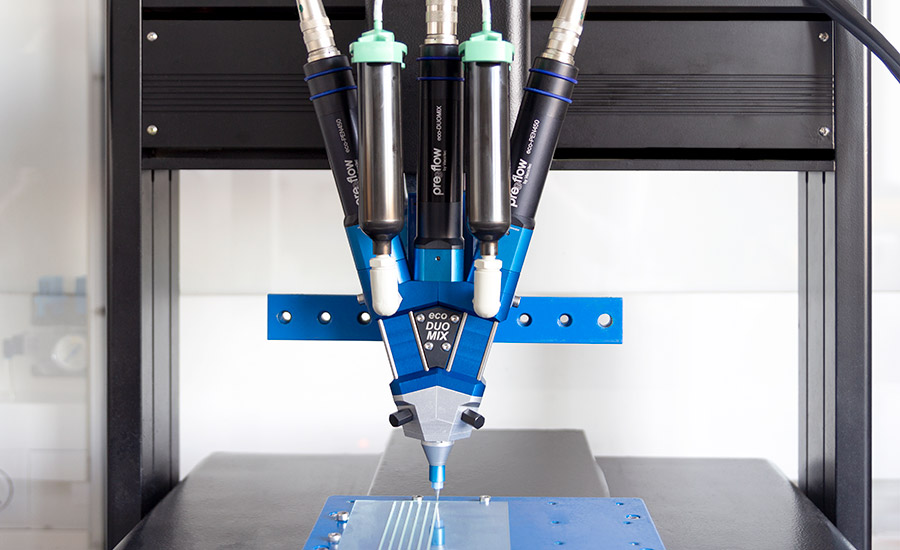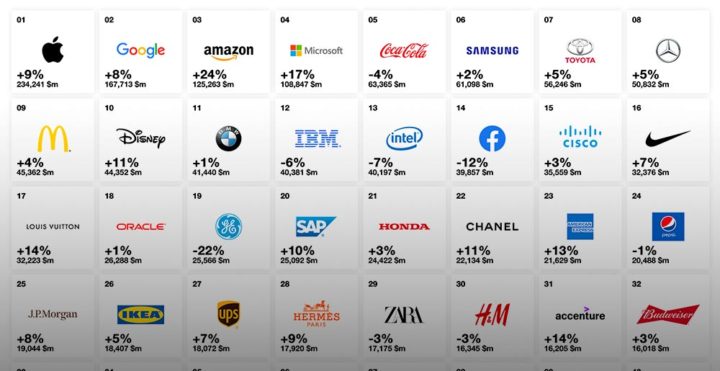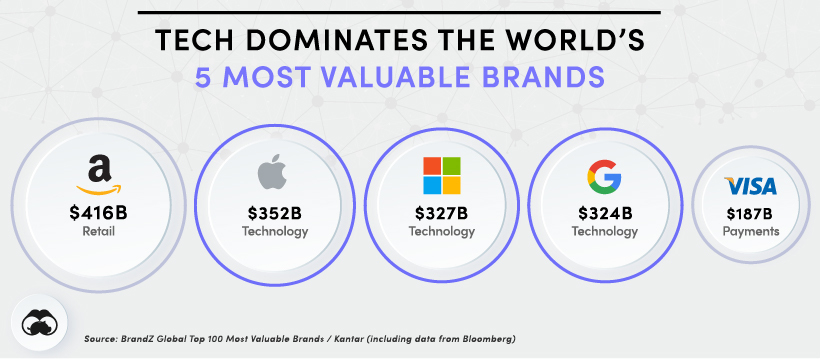Audio and Visual Technology: Shaping Our World
Audio and visual technology, the foundation of our modern world, has transformed how we experience entertainment, communicate, and learn. From the invention of the radio and film to the advent […]

Audio and visual technology, the foundation of our modern world, has transformed how we experience entertainment, communicate, and learn. From the invention of the radio and film to the advent of digital audio and high-definition video, this technology has continually evolved, impacting society in profound ways.
This journey explores the fascinating evolution of audio and visual technology, delving into the fundamental principles, diverse formats, and exciting applications that have shaped our world. We’ll examine the convergence of these technologies in multimedia, discuss emerging trends like virtual and augmented reality, and analyze the social and ethical implications of this ever-evolving landscape.
Evolution of Audio and Visual Technology
The evolution of audio and visual technology has dramatically transformed how we communicate, entertain ourselves, and access information. From the early days of radio and film to the modern era of digital audio and high-definition video, technological advancements have revolutionized our world, impacting every aspect of our lives.
Early Innovations and Their Impact
The development of audio and visual technology began in the late 19th century with the invention of the telephone and the phonograph. These inventions marked the beginning of a new era of communication and entertainment, allowing people to connect with each other over long distances and experience recorded music for the first time.
- The invention of the radio in the early 20th century further revolutionized communication, enabling mass broadcasting of news, music, and entertainment programs. The radio quickly became a central part of everyday life, bringing people together through shared experiences and fostering a sense of community.
- The development of film in the late 19th century introduced a new form of entertainment, allowing audiences to experience stories and events visually. Early films were silent and often accompanied by live music, but the introduction of sound in the 1920s marked a significant milestone, creating a more immersive and engaging cinematic experience.
Transition to Digital Technology
The late 20th century witnessed a significant shift from analog to digital technology, impacting audio and visual technologies profoundly. Digital audio and video offered several advantages over their analog counterparts, including higher fidelity, greater storage capacity, and easier manipulation and distribution.
- The development of the compact disc (CD) in the 1980s revolutionized music distribution, offering a higher fidelity sound than vinyl records and greater portability. The CD quickly became the dominant format for music, leading to a decline in vinyl sales.
- The advent of the internet in the 1990s further transformed the landscape of audio and visual technology, enabling the rapid sharing and distribution of digital content. Streaming services like Spotify and Netflix have become increasingly popular, offering users access to a vast library of music and movies on demand.
Modern Advancements and Their Influence
Modern advancements in audio and visual technology continue to push the boundaries of what is possible, creating increasingly immersive and interactive experiences.
- High-definition (HD) video has become the standard for television and film, offering viewers a much clearer and more detailed picture than standard definition (SD) video. 4K and 8K resolution offer even greater detail and realism, enhancing the viewing experience further.
- Virtual reality (VR) and augmented reality (AR) technologies are rapidly emerging, creating new and exciting ways to experience audio and visual content. VR headsets allow users to immerse themselves in virtual worlds, while AR overlays digital information onto the real world, blurring the lines between reality and virtuality.
- Artificial intelligence (AI) is playing an increasingly important role in audio and visual technology, enabling personalized experiences and automated content creation. AI algorithms can analyze user preferences to recommend music and movies, generate realistic images and videos, and even compose music.
Audio Technologies
Audio technology encompasses the recording, processing, and reproduction of sound. It has evolved significantly over the years, from the early days of analog recording to the digital age of high-fidelity audio. This section explores the fundamental principles behind audio technology and delves into the various formats, technologies, and applications that have shaped our listening experiences.
Audio Recording
Audio recording involves capturing sound waves and converting them into a format that can be stored and reproduced. This process typically involves a microphone, which converts sound pressure into an electrical signal. The electrical signal is then amplified and processed before being stored on a recording medium, such as a magnetic tape, a vinyl record, or a digital storage device.
Audio Processing
Audio processing refers to the manipulation of audio signals to enhance their quality, modify their characteristics, or create special effects. This can involve a wide range of techniques, including equalization, compression, limiting, and reverberation. Equalization adjusts the frequency balance of an audio signal, while compression reduces the dynamic range to make the audio signal louder and more consistent. Limiting prevents the audio signal from exceeding a certain volume level, while reverberation adds a sense of space and depth to the audio.
Audio Reproduction
Audio reproduction involves converting stored audio signals back into sound waves that can be heard. This typically involves a playback device, such as a speaker or headphones, which converts the electrical signal back into sound waves. The quality of audio reproduction depends on various factors, including the quality of the recording, the playback device, and the listening environment.
Audio Formats
Audio formats are different ways of representing audio signals digitally. Each format has its own advantages and limitations in terms of file size, sound quality, and compatibility.
Overview of Audio Formats
- MP3 (MPEG-1 Audio Layer 3): MP3 is a widely used compressed audio format that achieves a good balance between file size and sound quality. It is known for its efficiency and compatibility with various devices. However, MP3 compression can result in some loss of audio information, particularly in the high and low frequencies.
- AAC (Advanced Audio Coding): AAC is a newer compressed audio format that offers improved sound quality compared to MP3 at similar bitrates. It is often used for streaming audio and digital music downloads.
- FLAC (Free Lossless Audio Codec): FLAC is a lossless audio format that compresses audio data without any loss of information. This results in higher fidelity audio compared to compressed formats like MP3 and AAC. However, FLAC files are typically larger than compressed formats.
- WAV (Waveform Audio File Format): WAV is an uncompressed audio format that stores audio data in its raw form. This results in the highest fidelity audio but also the largest file sizes. WAV is commonly used for professional audio production and recording.
- AIFF (Audio Interchange File Format): AIFF is another uncompressed audio format that is popular on Apple computers. It offers similar sound quality to WAV but may have different file size characteristics.
Audio Technologies
The field of audio technology is constantly evolving, with new technologies and applications emerging regularly. Here is a table showcasing various audio technologies, including their applications, features, and technical specifications:
| Technology | Application | Features | Technical Specifications |
|---|---|---|---|
| Dolby Atmos | Immersive surround sound for home theaters and cinemas | Creates a realistic and immersive sound experience by placing sound objects in a three-dimensional space | Uses multiple speakers and a dedicated audio track to create a surround sound experience |
| DTS:X | Immersive surround sound for home theaters and cinemas | Similar to Dolby Atmos, DTS:X creates a realistic and immersive sound experience by placing sound objects in a three-dimensional space | Uses multiple speakers and a dedicated audio track to create a surround sound experience |
| Active Noise Cancellation (ANC) | Noise reduction in headphones and earphones | Uses microphones and electronic circuitry to cancel out unwanted noise | Typically uses feedforward or feedback ANC techniques to reduce noise |
| High-Resolution Audio (HRA) | High-fidelity audio playback | Offers higher sampling rates and bit depths than standard CD audio, resulting in greater detail and accuracy | Typically uses sampling rates of 96 kHz or higher and bit depths of 24 bits or higher |
| Digital Signal Processing (DSP) | Audio processing and enhancement | Uses digital algorithms to manipulate audio signals, enabling features like equalization, compression, and reverberation | Can be implemented in hardware or software, depending on the application |
Visual Technologies
Visual technologies encompass the methods and tools used to capture, process, and display images. They play a pivotal role in our understanding of the world and how we interact with information. This section delves into the fundamental principles behind these technologies, exploring their evolution and diverse applications.
Image Capture, Processing, and Display
Image capture, processing, and display form the core of visual technologies. These processes work in tandem to transform light into interpretable visual information.
* Image Capture: This involves converting light into an electronic signal. Sensors, such as those found in cameras and scanners, capture light and convert it into digital data. The sensitivity of these sensors determines the quality and detail of the captured image.
* Image Processing: This stage involves manipulating the captured data to enhance, modify, or analyze the image. Algorithms are employed to perform operations like contrast adjustment, noise reduction, and edge detection.
* Image Display: This final stage involves converting the processed digital data back into a visual representation. Display technologies, such as LCD and OLED screens, use various methods to emit light and create images. The resolution and color depth of the display determine the clarity and richness of the displayed image.
Visual Formats
Visual formats represent different ways of encoding and storing visual information. Each format has unique characteristics that influence its suitability for specific applications.
* Analog Formats: These formats use continuous signals to represent images. Examples include film and photographic prints. Analog formats are known for their unique aesthetic qualities, but they are susceptible to degradation over time.
* Digital Formats: These formats use discrete values to represent images. Examples include JPEG, PNG, and TIFF. Digital formats offer superior storage and transmission capabilities compared to analog formats, making them widely used in modern applications.
* 3D Formats: These formats represent images in three dimensions, creating an illusion of depth and realism. Examples include stereoscopic images, 3D models, and holographic displays. 3D formats are employed in entertainment, medical imaging, and design applications.
Visual Technologies Table, Audio and visual technology
The following table summarizes some prominent visual technologies, highlighting their capabilities, resolution, and color depth:
| Technology | Capabilities | Resolution | Color Depth |
|—|—|—|—|
| Film | High dynamic range, unique aesthetic | Varies | Varies |
| Digital Camera | High resolution, versatility | Varies | Varies |
| LCD Display | Affordable, wide availability | Varies | 8-bit, 10-bit |
| OLED Display | High contrast, deep blacks | Varies | 10-bit, 12-bit |
| Holographic Display | 3D representation, immersive experience | Limited | Varies |
Convergence of Audio and Visual Technologies
The convergence of audio and visual technologies has revolutionized multimedia experiences, blurring the lines between distinct mediums and creating a rich tapestry of interactive content. This convergence has led to a paradigm shift in how we consume, create, and distribute entertainment, information, and communication.
Impact on User Experience
The convergence of audio and visual technologies has significantly enhanced user experiences across various platforms. The integration of immersive audio with high-definition visuals creates a more engaging and realistic experience. For example, surround sound in movies and video games allows users to feel more immersed in the action, while high-resolution displays provide a more detailed and lifelike viewing experience.
Impact on Content Creation
The convergence of audio and visual technologies has also transformed content creation workflows, empowering creators with powerful tools and techniques. The integration of digital audio workstations (DAWs) with video editing software allows for seamless synchronization of audio and video tracks, enabling creators to produce high-quality multimedia content with greater ease.
Impact on Distribution Models
The convergence of audio and visual technologies has led to the rise of new distribution models, particularly in the realm of online streaming platforms. These platforms leverage the power of the internet to deliver multimedia content on demand, providing users with greater control over their viewing and listening experiences.
Innovative Applications
The convergence of audio and visual technologies has given rise to innovative applications that integrate audio and visual elements in novel ways.
- Virtual Reality (VR): VR applications combine immersive audio with 360-degree visuals to create highly realistic and interactive experiences. These experiences can range from virtual tours to interactive games, offering users a sense of presence and engagement that traditional media cannot replicate.
- Augmented Reality (AR): AR overlays digital information onto the real world, blending audio and visual elements to enhance user experiences. For example, AR applications can provide real-time information about landmarks, products, or services, enriching the user’s understanding of their surroundings.
- Interactive Storytelling: The convergence of audio and visual technologies allows for the creation of interactive stories that engage users on a deeper level. These stories can be tailored to individual preferences, offering personalized experiences and encouraging active participation in the narrative.
Emerging Trends in Audio and Visual Technology
The world of audio and visual technology is constantly evolving, with new trends emerging and reshaping how we interact with information and each other. These trends are driven by advancements in artificial intelligence, virtual and augmented reality, and other cutting-edge technologies, leading to exciting possibilities across various industries.
Virtual and Augmented Reality
Virtual reality (VR) and augmented reality (AR) are transforming the way we experience the world. VR immerses users in computer-generated environments, while AR overlays digital information onto the real world. These technologies are impacting various industries, including:
- Entertainment: VR gaming offers immersive and interactive experiences, while AR can enhance live events and concerts.
- Healthcare: VR is used for training medical professionals, treating phobias, and providing pain management. AR can assist surgeons during procedures and provide patients with interactive medical information.
- Education: VR can create engaging and interactive learning environments, while AR can enhance textbooks and bring historical events to life.
- Business: VR can be used for product design, training, and virtual meetings, while AR can provide workers with real-time information and assistance.
Artificial Intelligence
AI is revolutionizing audio and visual technology, enabling machines to understand and respond to human language and visual information. AI is used in various applications, including:
- Speech Recognition: AI-powered speech recognition software can transcribe audio into text, enabling voice assistants and automated captioning.
- Image Recognition: AI can identify objects, faces, and scenes in images, enabling applications such as self-driving cars and medical diagnostics.
- Content Creation: AI can generate music, art, and even video content, pushing the boundaries of creative expression.
Convergence of Audio and Visual Technologies
The lines between audio and visual technology are blurring, with these technologies increasingly integrated. This convergence is driving innovation in areas such as:
- Immersive Experiences: Combining VR/AR with audio technologies creates highly immersive experiences, enhancing the sense of presence and realism.
- Interactive Storytelling: Audio and visual technologies can be combined to create interactive stories that respond to user input, creating personalized experiences.
- Personalized Content: AI can analyze user preferences and create tailored audio and visual content, enhancing user engagement.
The future of audio and visual technology holds immense potential, with advancements in AI, VR, and AR driving innovation and transforming how we interact with the world. However, ethical considerations and responsible development are crucial to ensure these technologies benefit society and address potential challenges.
Applications of Audio and Visual Technology
Audio and visual technologies have become ubiquitous, permeating almost every aspect of our lives. From entertainment and education to healthcare and communication, these technologies have revolutionized how we interact with the world around us. This section explores the diverse applications of audio and visual technologies across various industries, highlighting their impact on user experience, efficiency, and innovation.
Entertainment
Audio and visual technologies are the lifeblood of the entertainment industry. They provide the foundation for immersive experiences, captivating audiences with compelling storytelling and vibrant visuals.
- Movies and Television: The evolution of audio and visual technologies has been instrumental in shaping the cinematic experience. High-definition displays, surround sound systems, and advanced special effects have elevated movie and television productions to new levels of realism and engagement.
- Gaming: The gaming industry thrives on the convergence of audio and visual technologies. From the immersive soundscapes of virtual worlds to the intricate details of character models and environments, these technologies create interactive and engaging experiences for gamers worldwide.
- Music and Concerts: Audio technologies are central to the creation and consumption of music. Recording studios utilize advanced microphones, mixing consoles, and mastering software to produce high-quality audio. Live concerts rely on powerful sound systems to deliver immersive experiences for audiences.
Education
Audio and visual technologies have transformed education, creating new avenues for learning and enhancing accessibility.
- Online Learning Platforms: Online learning platforms leverage audio and visual technologies to deliver interactive and engaging content. Video lectures, simulations, and virtual labs provide students with diverse learning experiences.
- Interactive Whiteboards: Interactive whiteboards combine audio and visual elements, allowing teachers to present information, engage students in discussions, and facilitate collaborative learning.
- Accessibility Tools: Audio and visual technologies play a crucial role in making education accessible to individuals with disabilities. Screen readers, text-to-speech software, and captioned videos enable students with visual impairments to engage with educational content.
Healthcare
Audio and visual technologies are increasingly integrated into healthcare, enhancing patient care, improving diagnosis, and fostering medical innovation.
- Medical Imaging: Advanced imaging technologies, such as MRI, CT scans, and ultrasound, utilize audio and visual signals to create detailed images of the human body, aiding in diagnosis and treatment planning.
- Telemedicine: Telemedicine platforms leverage audio and visual technologies to connect patients with healthcare professionals remotely. Video conferencing, remote monitoring devices, and tele-diagnostics enable patients to receive consultations and care without the need for physical visits.
- Surgical Robotics: Surgical robots incorporate audio and visual technologies to enhance precision and minimize invasiveness during complex procedures. Surgeons can remotely control robotic arms equipped with cameras and instruments, providing real-time visual feedback during surgery.
Communication
Audio and visual technologies have revolutionized communication, enabling seamless connections across geographical boundaries and fostering global collaboration.
- Video Conferencing: Video conferencing platforms utilize audio and visual technologies to facilitate real-time meetings and collaborations between individuals in different locations. These platforms have become essential for businesses, educational institutions, and government agencies.
- Social Media: Social media platforms rely heavily on audio and visual technologies to connect users. Video sharing, live streaming, and audio messaging have become integral parts of social interaction and information sharing.
- Mobile Devices: Mobile devices, equipped with cameras, microphones, and high-definition displays, have become ubiquitous communication tools. These devices enable users to capture and share audio and visual content, connect with others through video calls, and access a vast array of online information.
Social and Ethical Implications of Audio and Visual Technology

The rapid advancement of audio and visual technologies has ushered in a new era of interconnectedness, convenience, and entertainment. However, this evolution also presents a complex tapestry of social and ethical implications that demand careful consideration. From concerns about privacy and accessibility to the potential for misuse, these technologies have the power to shape our lives in profound ways. Understanding the potential impact of these technologies is crucial for ensuring their responsible development and deployment.
Privacy Concerns
The increasing reliance on audio and visual technologies has raised significant concerns about privacy. The ubiquitous nature of smartphones, surveillance cameras, and social media platforms has created a vast network of data collection and analysis. This raises questions about the extent to which our personal information is being gathered, stored, and used. For example, facial recognition technology, while offering potential benefits in security and law enforcement, has also been criticized for its potential to invade privacy and perpetuate bias.
Wrap-Up
As audio and visual technology continues to advance at an astonishing pace, we can expect even more transformative innovations in the years to come. From immersive virtual experiences to personalized learning platforms, the possibilities are endless. However, it’s crucial to approach this evolution with a sense of responsibility, ensuring that these technologies are used ethically and for the benefit of all.
Audio and visual technology are constantly evolving, bringing us new ways to experience the world. From immersive sound systems to high-definition displays, the possibilities are endless. One key component in this evolution is the use of advanced materials like epoxy resins, which play a vital role in the construction and durability of these devices.
For example, epoxy technology 353nd is used in the manufacturing of audio speakers, ensuring they can withstand vibrations and deliver crisp sound. This technology helps ensure that our audio and visual experiences are clear, vibrant, and long-lasting.










